How Plastic Bottles Were Turned Into Toilets & Classrooms — While Cutting 2.3 Lakh Kg CO₂
“One of our earliest installations was a toilet for women working on a tea estate in Assam. After it was built, one of them said, ‘This is the first time in 20 years that I feel like a human being.’ That’s when we knew we had to do more,” Amit Roy, founder of Green Ammo, shares with The Better India.
In a country grappling with an ever-growing plastic crisis (9.3 million tonnes annually) and mountains of unrecycled waste, stories like these shine a spotlight on the power of grassroots innovation. Green Ammo, a non-profit led by Amit Roy and Momo, is not just managing waste; they’re transforming it. Their unique approach of turning soft plastic waste into durable “Bottle Bricks” is creating infrastructure like toilets, benches, libraries, school walls, and even museums across India and Nepal.
But beyond the brick and mortar, what Green Ammo is building is something far more important – dignity, access, and a collective sense of purpose.
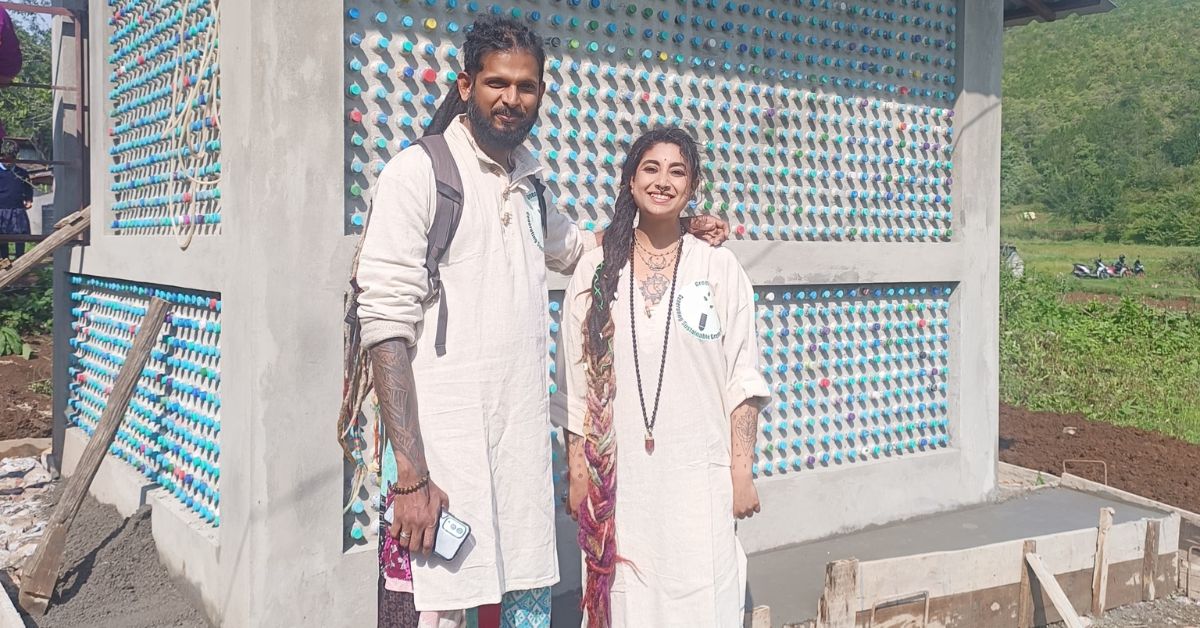 Green Ammo, a non-profit led by Amit Roy and Momo, is not just managing waste; they’re transforming it.
Green Ammo, a non-profit led by Amit Roy and Momo, is not just managing waste; they’re transforming it.
How a simple idea took shape in a village and sparked a movement
The concept of Bottle Bricks is deceptively simple. Clean, dry, soft plastic waste, think chips packets, wrappers, cling film, is tightly stuffed into plastic PET bottles, which are then sealed and used like regular bricks. Each brick removes at least 250 grams of plastic from the environment and can last for over 300 years. When combined with cement, these bricks can be used to build anything from walls to furniture.
It all began in Khonoma, Nagaland, India’s first green village, where Amit was leading a sustainability workshop. “We realised most of the waste was soft plastic, easy to throw away but hard to recycle. I asked the villagers, ‘Can you give me 200 PET bottles and soft plastic waste?’ They delivered them in a week,” Amit shares.
Using those discarded materials, Amit built a public bench in the village. “That was our first test site. It’s still there,” he says proudly. Encouraged by the results and community engagement, Amit and Momo decided to scale the idea.
What started as a simple experiment soon transformed into a scalable, replicable model of community-driven change. Bottle Bricks became a symbol of self-reliance, innovation, and hope.
More than waste management, it’s about earning trust and empowering communities
 A dog house made with bottle bricks.
A dog house made with bottle bricks.
From the highlands of Sikkim to the tribal villages of Madhya Pradesh, Green Ammo now works with hundreds of communities and schools. “People often assume that villagers or students will not take an interest. But we’ve seen children light up when they see the bricks they made used to build a toilet or a wall. It gives them ownership,” Momo tells The Better India.
In Shillong, St. Michael’s Higher Secondary School became an early adopter of the programme after their lecturer, Sukanta Bhattacharjee, read about Green Ammo’s SUPER campaign in the local news. “Being a teacher and administrator, I realised this is a project every school should undertake,” he says.
After a discussion with the founding trustees, Sukanta invited Green Ammo to conduct an awareness session at the school. “Now, making bottle bricks is part of our curriculum,” he adds. While their goal is to eventually build a large gallery out of Bottle Bricks, the impact is already visible.
“My students have started cleaning the school compound themselves. They even come to the staff room asking for PET bottles! This is the beginning of a revolution in the academic understanding of environmental education,” he beams.
And it’s not just students. “The community has started noticing,” Sukanta adds. “We began the project with just two classes. Now the headmistress has spread it across the school, and many others are following suit.”
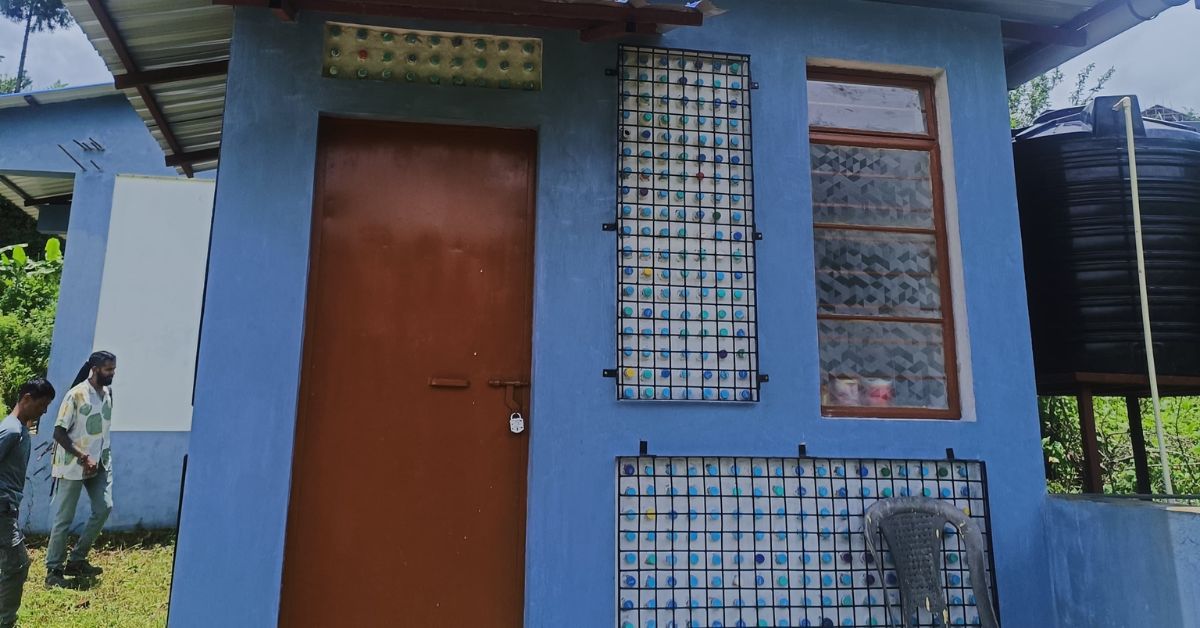 The toilet near Nongpiur LP School made with bottle bricks.
The toilet near Nongpiur LP School made with bottle bricks.
The Bottle Brick initiative is not just about cleaning up the environment; it’s about creating a culture of care, stewardship, and collaboration. It builds trust between facilitators and communities, educators and students, and people and the planet.
From slums to school campuses, every bottle brick lays the foundation of dignity
What makes the concept of bottle bricks so impactful is their inclusivity. Anyone, child or adult, can make one. “We’ve had people in slums, corporate employees, college students, and women in rural areas participate. All it takes is waste and a bottle. And the moment they see it become a wall or bench, it changes something in them,” says Momo.
The bricks have been used to build women’s washrooms in tea estates, play areas in bastis, and even entire school fences. One of Green Ammo’s most powerful stories came from a settlement in Assam where girls had dropped out of school due to the lack of sanitation. “After the toilet was built, they came back. That, for me, was huge,” Amit shares.
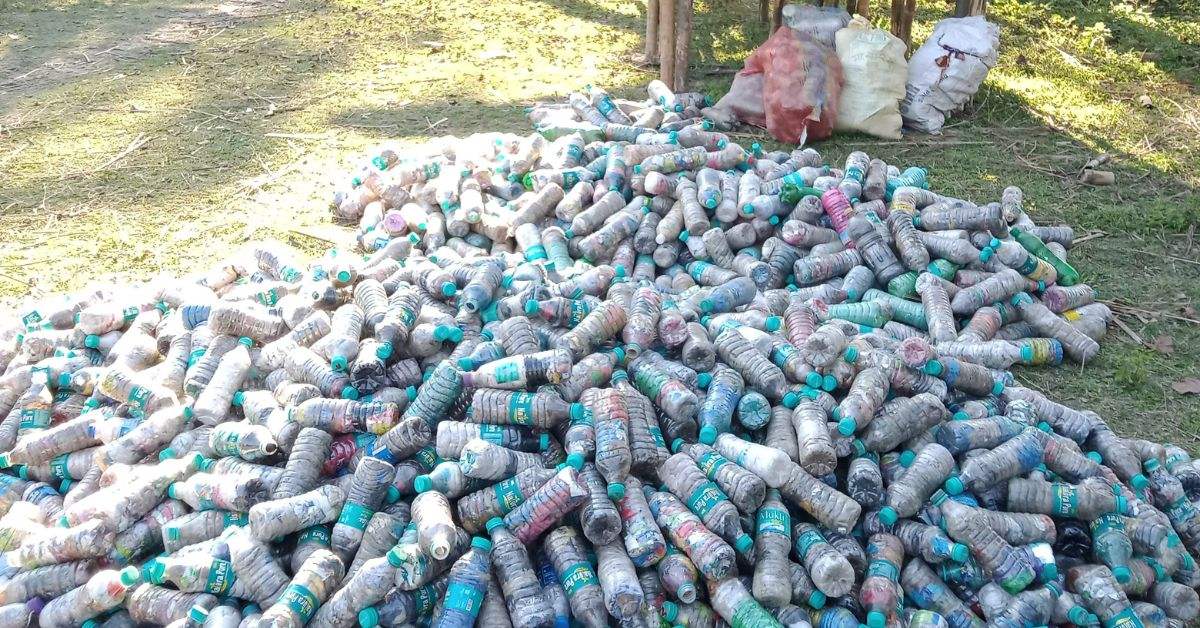 A haul of bottle bricks made by the local community.
A haul of bottle bricks made by the local community.
In some cases, the bricks have been used for memorials too. “In one tribal village, we built a memorial for a local hero entirely out of Bottle Bricks. The villagers now protect it like a shrine. That’s when I knew this project wasn’t just about infrastructure; it’s emotional,” Amit reflects.
Green Ammo also ensures their approach is not one-off or extractive. “We don’t just enter, build, and leave,” says Momo. “We work with the community, educate them on plastic waste, and create local Bottle Brick hubs. This makes it a sustained effort.”
These bricks, created from what we often deem ‘worthless,’ are laying the literal and metaphorical foundation for cleaner, more equitable societies.
One of the most inspiring elements of the Green Ammo project is the way it has flipped conventional learning. Instead of just reading about sustainability, students are now living it.
“They’ve started bringing me Bottle Bricks every week,” Sukanta shares with The Better India. “They’re excited about the gallery we plan to build. And more than that, they are learning values of cleanliness, responsibility, and pride in their environment.”
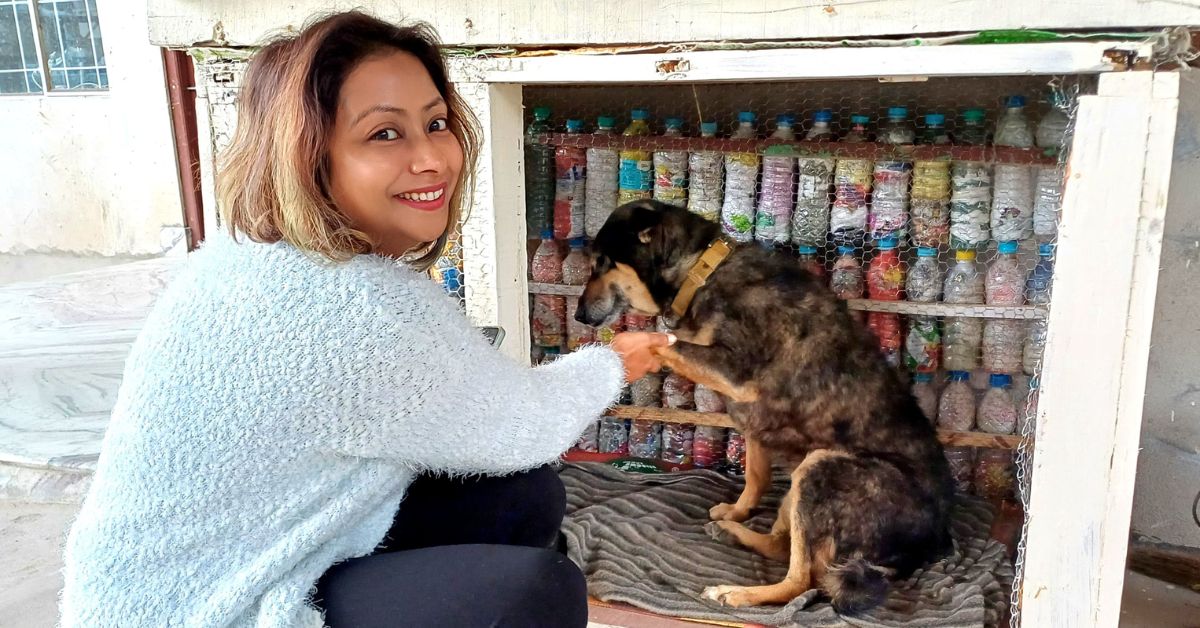 The dog house has received a lot of love from tourists as well.
The dog house has received a lot of love from tourists as well.
The excitement is palpable, especially among children who have never before felt their voices or actions mattered. “One girl came to me and said, ‘Didi, I never thought I could build something. But I made this brick, and now it’s part of our toilet,” Momo recalls.
Amit adds, “That’s when the magic happens. When a child sees that their waste, something they thought had no value, can become a school bench or a wall, they understand the power of action.”
Sukanta sums it up best: “Projects like this give something back to students that they can relate to. It becomes part of their identity, and I’m happy to be a part of that.”
These are not just lessons in recycling; they are life lessons in agency, empathy, and empowerment.
Nature is everyone’s responsibility, and change begins with shared ownership
For sceptics who question whether plastic can be used to build safe infrastructure, Amit is clear: “We don’t build high-rises. We build toilets, benches, libraries, and community spaces that need solutions now. And our structures have passed tests for durability and safety.”
Sukanta echoes this sentiment: “We are all consumers of plastic, and therefore responsible for its aftermath. This project allows every citizen to be a part of the solution. As a teacher, I must ensure students grow up eco-conscious. And that begins in the classroom.”
Green Ammo has also started training masons and community builders to work with Bottle Bricks, expanding the employment impact. “In some areas, people are earning by making bricks and building with them. It’s empowering on many levels,” Amit says.
Responsibility, when shared, becomes a force for collective upliftment and Green Ammo’s work is proof of that.
Building more than benches: toilets, shelters, and pride from repurposed waste
From benches in public parks to urinals in schools and even a community museum, Green Ammo’s Bottle Bricks have begun shaping infrastructure in ways that are functional, eco-friendly, and deeply symbolic.
“Our bricks have been used to build outdoor toilets in areas where sanitation was a big concern,” Amit says. “We’ve made benches for anganwadis, walkways in eco-tourism parks, and we’re now piloting school furniture and classroom walls.”
In one particularly memorable instance, a rural community that once dumped plastic near its water source now proudly shows off a Bottle Brick washroom built entirely from waste collected by locals. “It’s amazing what happens when people see their waste transformed into something dignified and useful,” says Momo.
Each installation becomes a symbol of what collective action can achieve. “We don’t just build structures,” Amit adds. “We build belief especially in the minds of the young.”
A hopeful revolution: How does Green Ammo work?
Green Ammo’s vision goes beyond construction. It’s about nurturing a mindset that treats waste not as something to be hidden or burned, but as something to be rethought, reused, and respected.
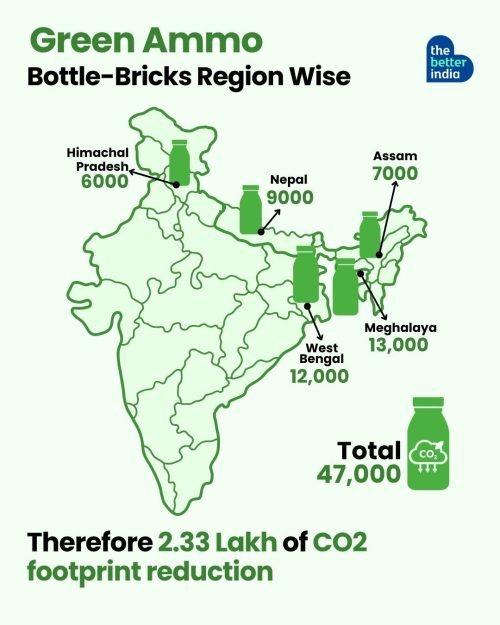
“The problem isn’t plastic alone, it’s our relationship with it,” Amit explains. “When people participate in making bottle bricks, they start becoming conscious of how much waste they generate. That awareness stays with them.”
With over 13,000 bottle bricks made in Meghalaya, 12,000 in West Bengal, 7,000 in Assam, 6,000 in Himachal Pradesh and 9,000 in Nepal, the initiative has helped divert over 2,33,750 kilograms of carbon footprint.
Today, Green Ammo works in multiple Indian states and even in parts of Nepal. Their model is open-source, and they regularly train community leaders, educators, and volunteers. As more schools integrate bottle brick-making into their curriculum, a quiet yet profound environmental movement is taking shape, led not by corporations or governments, but by children, teachers, and everyday citizens.
“We’re not trying to change the world overnight,” Momo tells The Better India. “We’re just helping people realise they already have the tools to make a difference.”
In every bench built, every wall laid, and every child who gleefully stuffs a wrapper into a PET bottle, a new possibility unfolds, one where sustainability isn’t an abstract goal, but a tangible, touchable act of care.
A quiet revolution, one bottle at a time
At its heart, Green Ammo’s Bottle Brick movement is not about bricks or benches. It’s about belief. Belief that everyday people, especially young children, can drive extraordinary change. From school corridors in Meghalaya to remote hamlets in Himachal and border villages in Nepal, the initiative is igniting a quiet revolution. One where waste isn’t discarded but reimagined. One where classrooms aren’t confined to textbooks but built, quite literally, by the hands of children with vision.
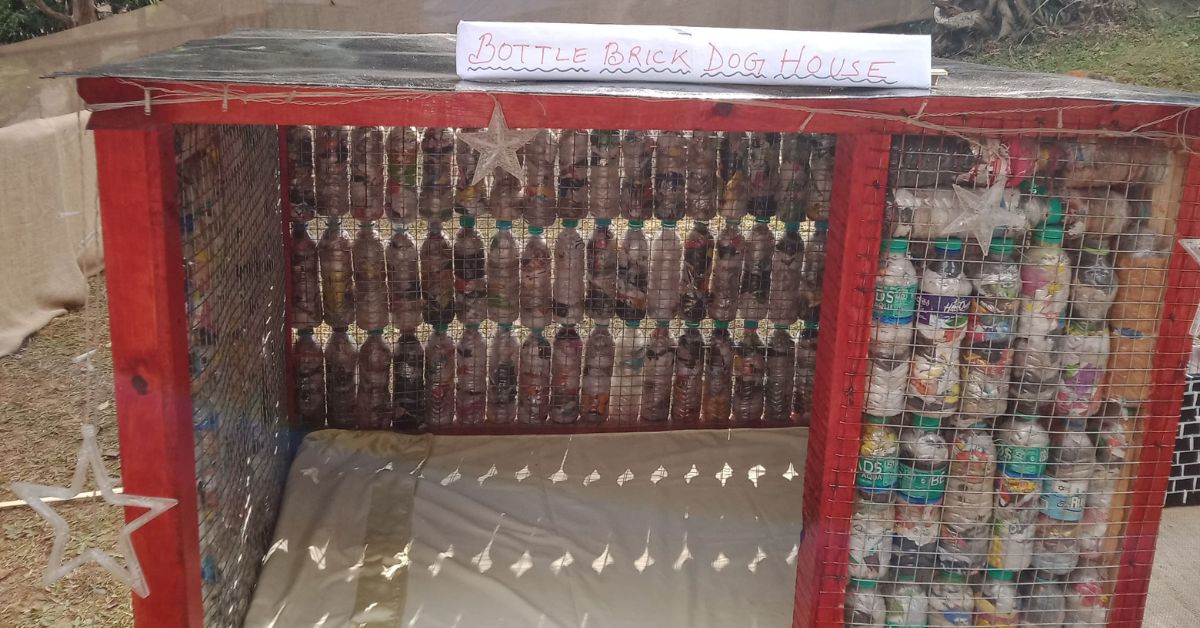 At its heart, Green Ammo’s Bottle Brick movement is not about bricks or benches. It’s about belief.
At its heart, Green Ammo’s Bottle Brick movement is not about bricks or benches. It’s about belief.
“This project allows all citizens to be part of the solution,” says Sukanta Bhattacharjee. “Nature is everyone’s responsibility.”
And it begins with something as simple as a plastic bottle.
If you’re a parent, a teacher, a policymaker or just someone who cares about the planet, there’s a way for you to be part of this movement. Start a bottle brick drive in your school or society. Invite Green Ammo for an awareness session. Collect your household soft plastic and help it become part of a bench, a school wall, or a shelter roof somewhere.
Because when waste becomes resource and communities become collaborators, the possibilities are endless.
To contribute Bottle Bricks or collaborate with Green Ammo, visit Green Ammo’s website or Instagram handle and be part of a future that builds, not burdens. ( www.greenammo.in)
News